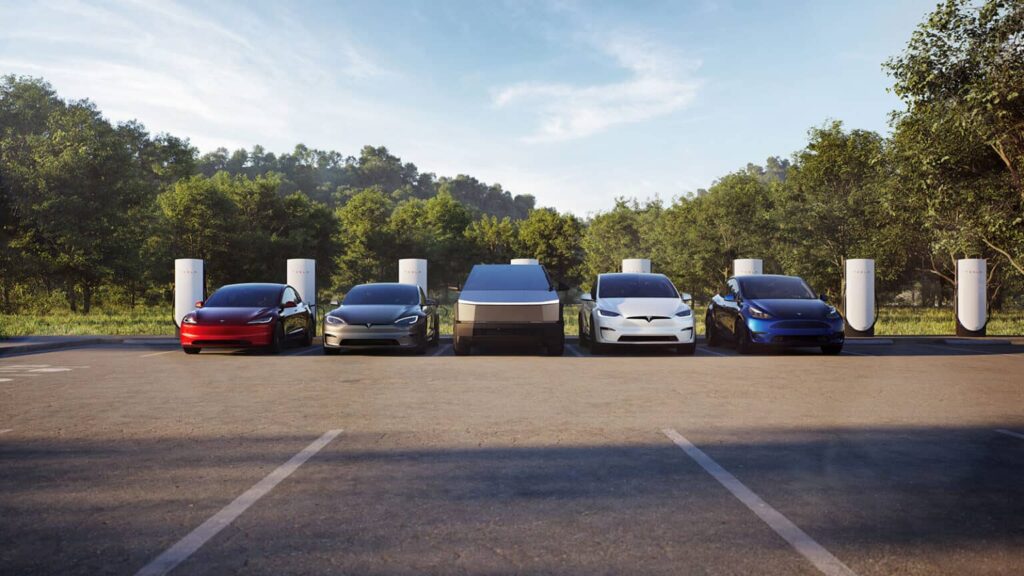Elon Musk’s Unusual Tesla Advertising Strategy Worked…Until Now
Tesla CEO Elon Musk has always hated advertising, as evidenced by his “I hate advertising” tweet in 2019. The enigmatic CEO has brought Tesla great success with his unorthodox Tesla marketing strategy. However, times have changed. Tesla advertising is now a necessity.
The electric vehicle business is vastly different now than in 2008, when Tesla broke new ground by releasing its all-electric Roadster. Tesla’s Roadster release resurrected the long-dead American EV revolution, which was killed twice, first in the 1800s and again in the 1990s.

For many years, Tesla enjoyed its first-mover position as the only American-made EV. Many Tesla owners and EV advocates praised Teslas for their innovative and groundbreaking designs. Teslas have been the most successful EVs of any American brand, as the largest all-electric producer.
Tesla produced its Model S sedan in 2012, Model X SUV in 2015, Model 3 sedan in 2017, Model Y crossover in 2020, Tesla Semi truck in 2022, and Cybertruck pickup truck in 2023.
In 2023, Tesla’s Model Y became the world’s best-selling car, the first time an EV ever won this distinction. The company celebrated producing its 6 millionth EV in April 2024.
Tesla’s North American Charging Standard
Nearly all major North American EV manufacturers and charging companies announced plans to switch to Tesla’s North American Charging Standard (NACS) by 2025. The connector is also called the J3400 by the Society of Automotive Engineers.
Using a single EV plug for charging will solve the current problem surrounding compatibility when charging EVs.

Widespread and Reliable Supercharger Network
An important part of Tesla’s success is its Supercharger network. Because the company has complete control over it, it’s a reliable network with very little downtime. Tesla drivers can feel confident they’ll have dependable and accessible charging in most parts of the country.
Non-Tesla chargers are a vastly different story. Because a variety of charge point operators, charging companies, and other stakeholders were involved with installing and managing non-Tesla charging stations, great confusion evolved — standards for reliability were never developed or upheld.
The problem became so widespread that the U.S. Department of Transportation’s Federal Highway Administration EV Charger Reliability and Accessibility Accelerator was created to address the problem. It offers funding for the repair and replacement of existing, non-operational public Level 2 and DC fast-charging stations.
Tesla’s Word of Mouth Strategy
In Tesla’s early days, Elon Musk believed the word-of-mouth strategy would help Tesla sell cars. The “social proof” of positive online reviews, mixed with “user-generated content” — basically, the owners posting positive statements online about their vehicles — convinced others to buy Teslas as well. Media coverage played a large part. According to the Wall Street Journal, media coverage of Tesla is its primary sales driver at present.
Financial filings revealed that Tesla hired a marketing agency, spending eight-figure totals between 2016 and 2019, allocated to marketing, advertising, and promotional expenses.
In 2024, slowing growth in consumer demand for electric-vehicles happened because of a lack of charging, high vehicle prices, and other barriers. Increased competition from other EV-makers, most notably Chinese company BYD, has finally drawn Tesla into advertising. BYD overtook Tesla as the largest global seller of EVs last quarter. Tesla’s stock price has dropped by nearly 30% so far in 2024.
Tesla’s Increased Ad Spend in 2024
Recently, Tesla has increased spending on a variety of paid media platforms, including Musk’s own X. A new page affiliated with Tesla has been buying video ads on Meta’s platforms. Musk considers Meta’s Mark Zuckerberg a rival. Last year, media reports advertised a proposed “cage match” fight between the two business leaders (but it never came to pass).
Most of Tesla’s ad spend has gone to YouTube, avoiding traditional television. YouTube allows a much more targeted ad, and targeting is a key factor in successful marketing. Tesla’s YouTube ads include family-friendly messaging like children in back seats and mentions of the Model Y’s five-star safety rating.
EV Market in 2024 Presenting New Challenges
The move into Tesla now advertising is indicative of the difficulties it faces. Along with all OEMs globally, Tesla is very concerned about the great success of China as it moves to continue and expand its domination of the global EV market in 2024 and beyond.
In the U.S., EV sales have hit a bottleneck due to a lack of charging, high EV prices, and many other reasons. However, as prices continue to drop, as they already have in China, the U.S. will see an EV explosion along with the rest of the world in the next few years.
Bloomberg Green reported the global 5% EV tipping point was crossed in 2021, meaning that the worldwide conversion from gas-powered cars to electric vehicles is now inevitable, unstoppable, and moving faster than anyone ever envisioned.

Electric Vehicle Marketing Consultant, Writer and Editor. Publisher EVinfo.net.
Services